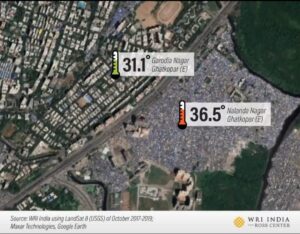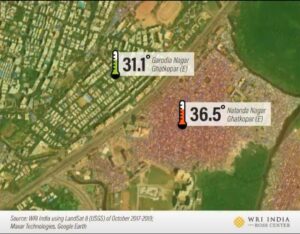Urban heat islands (UHIs) are areas in cities where the temperature is significantly higher than in the surrounding rural areas. UHIs are caused by the large amounts of concrete, asphalt, and other impervious surfaces in cities, which absorb and retain heat. They can have negative impacts on human health, energy consumption, and the environment.
Ways to reduce impact pf UHIs
- Increase green space: Trees and vegetation can mitigate heat in urban areas through evaporation cooling within transforming plants water to water vapor.


- Use reflective materials: Using reflective materials on roofs, pavements, and other surfaces can help to reduce the amount of heat absorbed by these surfaces and to lower temperatures in UHIs.
- Implement cool pavements: Using permeable pavements, such as those made of porous asphalt or permeable concrete, can help to reduce surface temperatures in UHIs by allowing water to infiltrate into the ground rather than running off into stormwater systems.
- Install green infrastructure: Green infrastructure, such as rain gardens and green roofs, can help to reduce the amount of stormwater runoff in UHIs, which can contribute to the urban heat island effect.
- Promote the use of public transportation: Encouraging the use of public transportation, such as buses and trains, can help to reduce the number of vehicles on the road, which can in turn lower temperatures in UHIs.
By implementing these and other measures, it is possible to minimize the impact of UHIs and to create more livable and sustainable cities.
